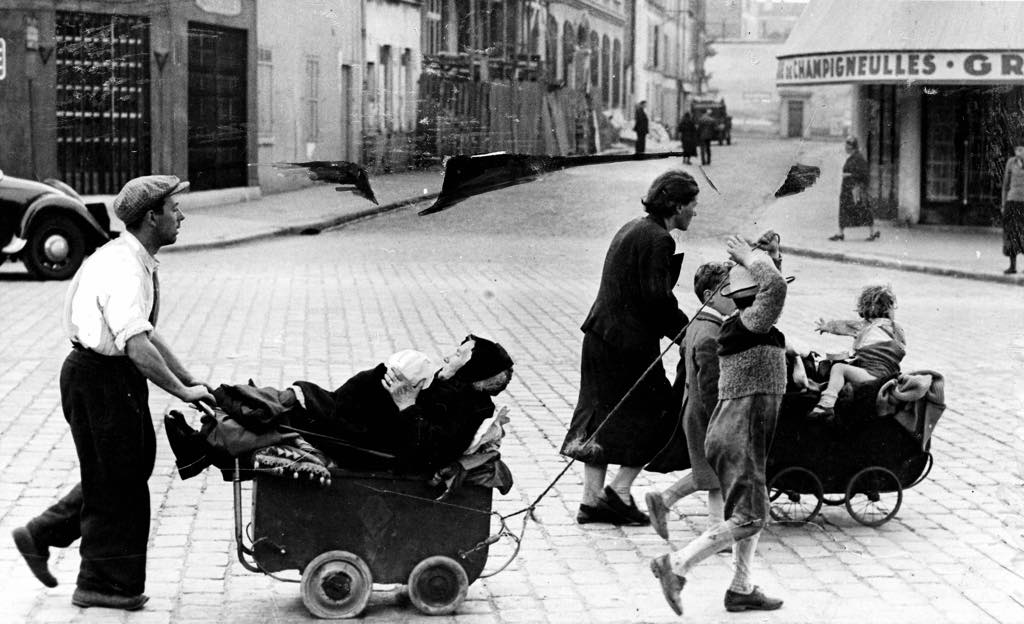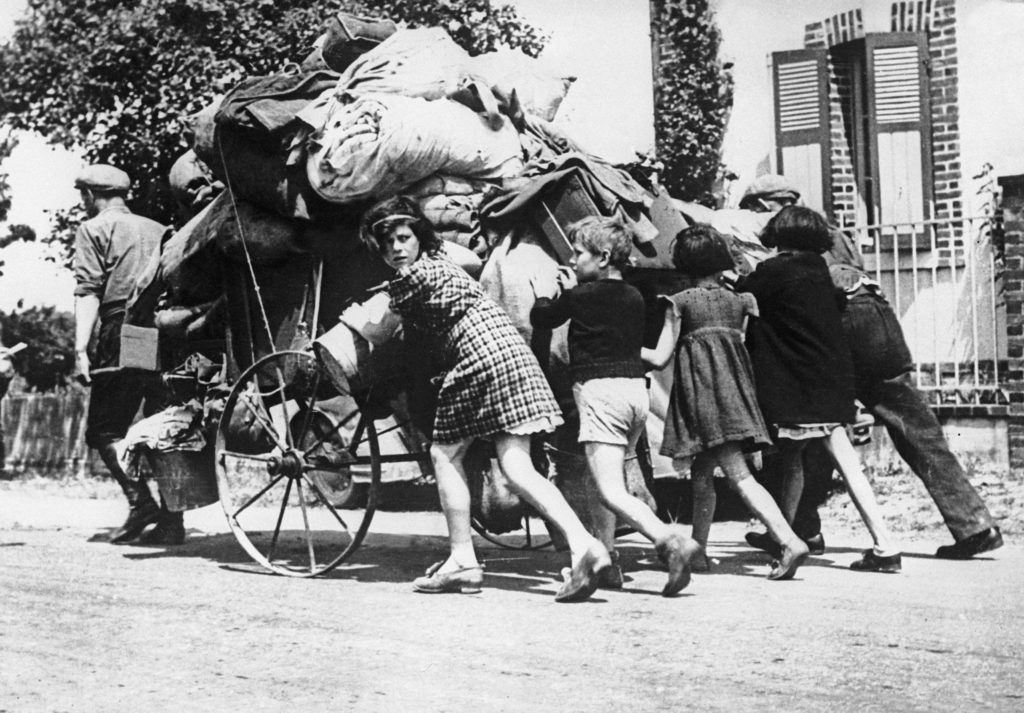
Of all the horrors that occurred during World War II, the mass exodus from Paris in 1940 as the Germans approached the city may not have been the most horrendous, which may explain why the story has been so seldom told. This fascinating tale held its own horrors, however, and needs to be known. “Les Parisians dans l’Exode” (“Parisian Exodus”), an exhibition at the Musée de la Libération de Paris–Musée du Général Leclerc–Musée Jean Moulin does the job admirably, in a clear, interesting way.

At the beginning of the war, ordinary Parisians lived their lives with a false sense of security during the Drôle de Guerre (Phony War), an eight-month period when almost nothing happened between the declaration of war on September 3, 1939, and the German invasion of France on May 10, 1940. While preparations for war were underway, the government made only minimal provisions for the evacuation of the city, believing, like most of the French population, that the “unbreachable” Maginot Line would keep the Germans on their own side of the border (this reminds me of the French government’s contention that the radioactive cloud from Chernobyl would considerately go around French borders, avoiding the country altogether). What preparations were made (bomb shelters, allocation of gas masks, etc.) were for the eventuality of air attacks, not a land invasion.
Well, as we all know, the Maginot Line was not unbreachable. As German troops approached Paris, its citizens, quite naturally, panicked (don’t forget that memories of the atrocities of World War I were still fresh, and German soldiers were greatly feared) and tried to get the hell out of town. On June 3, Paris was bombarded. On June 10, the government quietly slipped out of town. Pandemonium ensued, and the city’s social and political structure collapsed.

Around 2 million Parisians left the city by any means possible – train, car, truck or on foot – carrying whatever belongings they could gather. French journalist Georges Sadoul reported seeing “cars, bicycles, prams, wheelbarrows, all overloaded with mattresses, blankets, cats, birdcages, dolls, pots and pans, suitcases full to bursting, shapeless packages…”
Noël Pinelli wrote that people were crushed against building walls as they tried to move through the jammed streets. “Calls and cries could be heard. People struggled to remain upright and attempted to protect the modest furniture they carried.”
Some had friends or family outside the city, while others just took off with no destination in mind. They joined 6 million refugees who were already flooding the roads of France, fleeing the German invasion of the Netherlands, Belgium, Luxembourg and Northern France.
The panic led to some violent scenes. Prisoners were packed into convoys to be evacuated and shot if they tried to escape. Hospital nurses were instructed to give lethal injections to patients who could not be moved. On the road, German machine-gun attacks and bombs terrorized the refugees. Some villages were pillaged by retreating French soldiers and refugees.

It’s difficult to conceive of, but according to a Red Cross estimate, 90,000 children were lost in the chaos. Most were later found thanks to photos in the press and other efforts, but some were victims of German attacks.
On June 22, the writer Léon Werth, who had left Paris with his wife on June 11, wrote: “I am the prisoner of a road that I did not choose. I have become a refugee, and I have no refuge. I’m tired. Why go on?”
The exhibition pays special tribute to the bravery of Jean Moulin, who, as the prefect of Chartres, refused to abandon his city as the Nazis approached and later tried to commit suicide rather than sign a directive on German orders stating that black French troops had massacred civilians (who had actually been killed by German bombs). This brave man became a leading Resistance figure and died in 1943 after being tortured by Klaus Barbie.
On June 14, the Germans arrived in Paris, facing no resistance and randomly shooting at citizens to foment panic. World War I hero Marshal Pétain requested an Armistice with Germany on June 17, to the shock and dismay of many. Germaine Tillion, a hero of the Resistance, felt it as “a crushing blow” and “went out into the street and threw up” when she heard the news, while others were simply relieved that the fighting would end. The exodus slowed, and the tide began to turn as Parisians headed back home.
What they found were near-empty streets lined with swastika-emblazoned flags. “Paris is absolutely deserted,” wrote Paul Léautaud. “It’s empty. Shops are closed. A rare passerby. … All the buildings are shut up. … And the silence! Like a quiet avenue in the provinces, with no one in sight.”
The Occupation had begun, and the Resistance would soon form, but those are other stories that are well told in the Musée de la Libération’s permanent exhibition.
Favorite
Are accompanying writings of the photos in English or is the entire exhibit in French?
Good question! I should have mentioned that almost all the texts are well-translated into English.
Wonderful review! Thank you.
I will go.